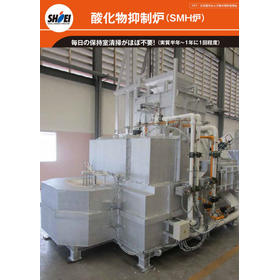[Technical Column] What is a Rotary Kiln? Structure, Design, and Applications by Temperature
We will explain the basic structure, features, types, and practical examples of rotary kilns in an easy-to-understand manner!
In recent years, with the expansion of smartphones and electric vehicles, many engineers have been facing concerns and questions such as, "Our company's heat treatment furnace causes uneven baking after processing, and it's a problem," and "I want to introduce a rotary kiln, but I would like to know what features it has." A rotary kiln is a heat treatment furnace for powder materials and is used in a wide range of fields, including metal materials such as iron and zinc for the manufacturing industry. It has advantages such as less uneven baking compared to conventional heat treatment furnaces and the potential for labor-saving in the manufacturing process. This article will clearly explain the basic structure, features, types, and case studies of rotary kilns. *For detailed content of the column, please refer to the related links. For more information, feel free to contact us.
Inquire About This Product
basic information
*You can view the detailed content of the column through the related link. For more information, please feel free to contact us.*
Price range
Delivery Time
Applications/Examples of results
*You can view the detailed content of the column through the related link. For more information, please feel free to contact us.*
catalog(2)
Download All CatalogsCompany information
The manufacturing process of industrial products in all fields almost always includes a heating process. Due to the various factors such as the material, size, processing volume, temperature, ambient gas, and transportation method of the items being processed, heating devices, or thermal processing furnaces, will have different specifications. Our company has consistently responded to user expectations with a flexible design and manufacturing system. We have accumulated extensive experience and achievements across a wide range of materials, including metal materials and mechanical components, as well as electronic components made of glass and ceramics, magnetic materials, battery materials, and various powder materials, regardless of the target objects. In recent years, it has become rare for thermal processing furnaces to serve merely as heating devices, and there is often a demand for some additional functions. In addition to safety, energy efficiency, and automation, we actively incorporate advanced technologies to address environmental issues and enhance usability, going beyond merely following past technologies, and we will continue to create alongside our customers.










![Single End Radiant Tube Burner [TRF Burner]](https://image.mono.ipros.com/public/product/image/c08/2000793597/IPROS40624651388633756578.png?w=280&h=280)
![Inclined immersion type electric heater holding furnace [oxide reduction type]](https://image.mono.ipros.com/public/product/image/c7e/2000804160/IPROS67190141477188481135.jpeg?w=280&h=280)
![Butterfly Valve BV Series [2D/3D CAD]](https://image.mono.ipros.com/public/product/image/7a0/2000815776/IPROS65074472961613162442.jpeg?w=280&h=280)
![Venturi Mixer VM Series [2D/3D CAD]](https://image.mono.ipros.com/public/product/image/d2e/2000852305/IPROS58786938329892851049.png?w=280&h=280)